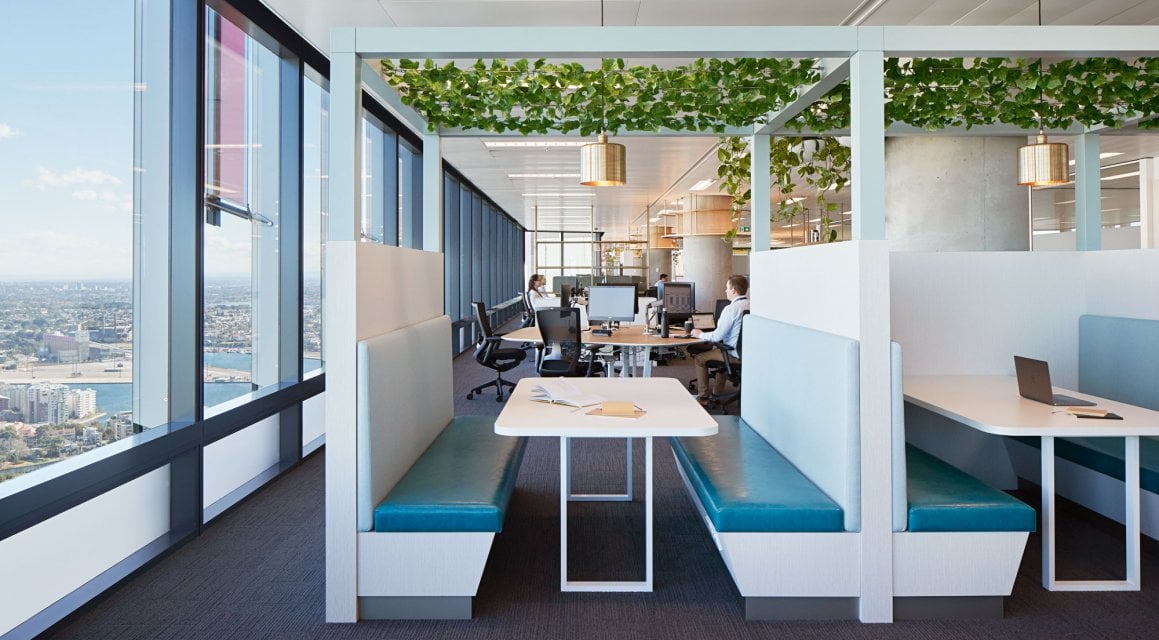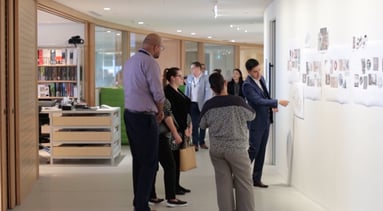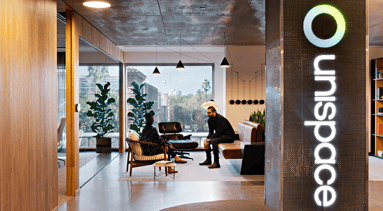
What is flexible working? Is this about the hours you work, or the place? And what is the difference between agile working, the Agile methodology and activity based working? We caught up with John Bechara, Principal, Client Relations to set the "agile vs agile" record straight.
Activity based working (ABW) and agile working are workplace buzzwords that are often given erroneous and arbitrary characterisations, frequently mistaken as the same concept.
In the move towards new ways of working and to accomodate ever-changing work styles, businesses often seek more agile environments which increase flexibility, collaboration and productivity. The agile workplace trend can mean something different to every business, and it can be difficult to navigate what these workplace trends will look like for your business.
“It can be difficult to decipher which type of “agile” is right for your business, if any. I often meet clients who believe the Agile work methodology and activity-based working are the same thing, so it is important to explain the differences between the two concepts to ensure they select the model that suits their business, goals and style of working,” says John Bechara, Principal, Client Relations. “The easiest way to understand it is that ABW focuses on empowering the individual, whereas the Agile methodology is geared towards teamwork and the outcome for the group.”
Activity based workingActivity based working is a workplace model which offers employees the flexibility, choice and autonomy to work in the best setting for a specific task, whether in or out of the office. In the workplace this is usually supported by various work settings strategically placed throughout the floorplate to offer variety, ambience and functionality required for a particular task. Employees are not assigned a fixed seat or space in the office, team members in ABW environments are encouraged to move around throughout the day; from collaborative and open settings for team based tasks, to focus booths or closed meeting spaces for individual tasks and so on. ABW is generally recognised as a working style that requires leadership teams to trust their employees to choose how they want to work.
At Pernod Ricard Winemakers the business transformed the way they work with their move to Barangaroo, where they adopted an ABW model. "The new workplace allows the business to be more innovative, agile, collaborative and to communicate more freely," says John.
"Our workplace strategy findings recommended an ABW work style with assigned neighbourhoods as well as settings for focus work and collaboration. Results from our space utilisation study which provided data on space efficiency revealed the average space utilisation at their previous workplace was less than 50% on their 4,000 sqm floor plate."
The team now works within a 2,500 sqm floor plate which is driving better outcomes for the business, inspiring conviviality and encouraging cross-collaboration. The ABW style generates a sense of empowerment offering Pernod Ricard's people freedom of choice, shaping a mindset of flexibility and agility.
Christian Campanella, HR Director at Pernod Ricard comments, “These findings reinforced the move to the ABW concept in the new workplace, an improvement for our employee culture from an agility and collaborative point of view.”
Agile work methodologyA different concept to ABW, the Agile work methodology is commonly used in the tech industry to support cross-functional project-based teams. “The need here is for a specific project team to be able to be based in close proximity so they can come together to collaborate, track and deliver the project. The type of workplace that would support this is different to ABW. It is a more streamlined space with less variety in work settings as the focus is on being together, being focused and getting the project to completion as quickly and seamlessly as possible," says John.
"The space needs to support teams that are project based. Neighbourhood clusters, whiteboards, post it notes, and scrum meetings will all be part of this fast paced innovative environment."
We worked with TripAdvisor for their new Sydney workplace to design a moveable, flexible workplace to support their Agile style of working. Each team of five to 10 people work in a pod. Their agile, post-it note project boards can be moved from pod work areas into stand-up meeting rooms for daily meetings with the team in San Francisco. There are smaller chat rooms and phone booths scattered around the open plan work area, and writable surfaces are everywhere.
"This is a fun and immersive work environment that’s also high on productivity. Working seamlessly across multiple time zones, we were able to bring it to life," says John.


